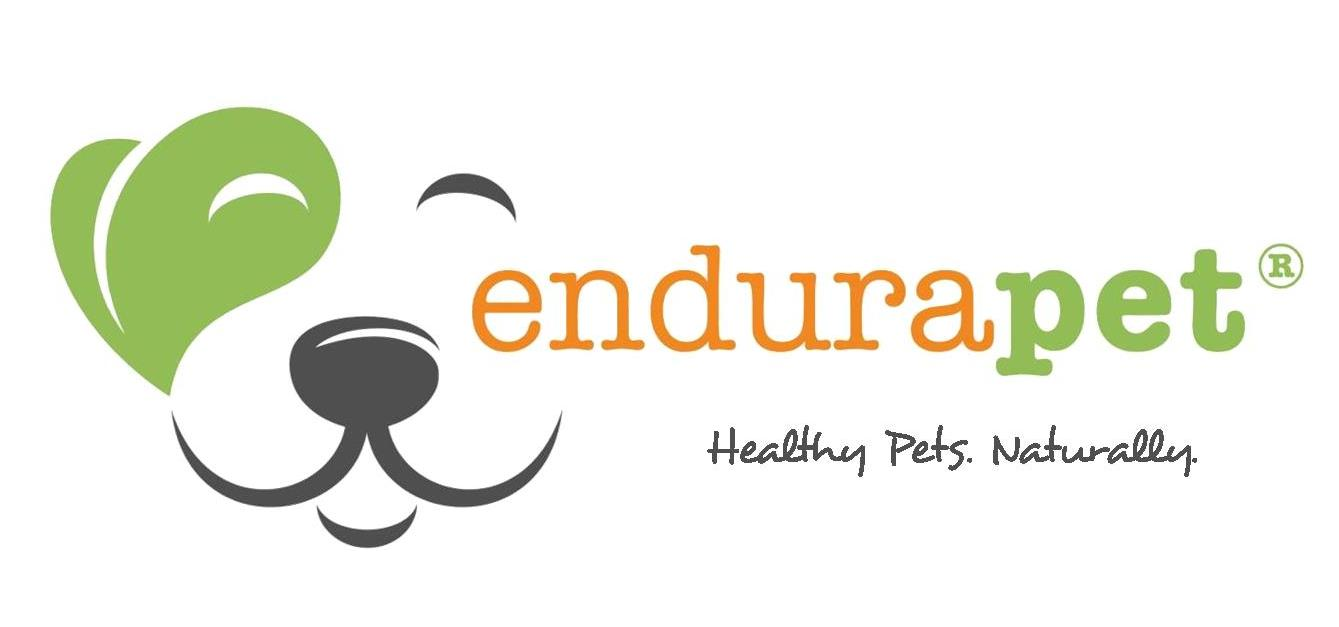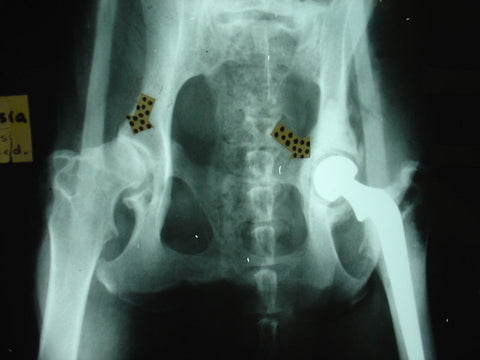Treatment options for dogs with hip dysplasia range from invasive surgery to conservative management.
Invasive treatments, such as surgery, will require diligent monitoring and could involve a long recovery time. However, conservative management takes time as well, so dedication will be essential, regardless of your decision. Your veterinarian should be a rich source of information while you are evaluating options. Ask a lot of questions, and ask them again if you need to. After all, you are your dog's best advocate and this is a big decision!
Surgical Options
 Triple Pelvic Osteotomy (TPO): Performed in dogs under 1 year old with documented hip socket depth but no active symptoms. This is an extensive surgery, but has been very effective, The procedure involves cutting the pelvic bones in three places, freeing the hip socket so it can be re-positioned for a better fit for the femur, then re-securing the hip socket with a plate and screws.
Triple Pelvic Osteotomy (TPO): Performed in dogs under 1 year old with documented hip socket depth but no active symptoms. This is an extensive surgery, but has been very effective, The procedure involves cutting the pelvic bones in three places, freeing the hip socket so it can be re-positioned for a better fit for the femur, then re-securing the hip socket with a plate and screws.
Darthoplasty: For young dogs without accurate socket space for TPO surgery, Darthroplasty is a relatively new option. In this procedure, bone is harvested and then implanted to create an adequate "shelf" over the rim on the inadequate socket. After fusing to the socket, this new shelf created an almost normal socket for the patient.
Photo: DAR "shelf" highlighted in red (photo: veterinarysurgery)
<Requires at least 6-weeks cage rest. Cost ranges from $200 to $3000>
Femoral Head Ostectomy (FHO): This surgery is best reserved for smaller dogs, although success is absolutely possible for larger dogs who are not overweight. In this procedure, the rough end of the femur is removed entirely, leaving the remaining bone to form a "false joint". The false joint is not as flexible as the original, but pain reduction is usually total, especially once the dog has had physical therapy and is used to the altered gait which usually accompanies FHO surgery.
Photo: completed FHO
<Does not require 6-week resting period. The cost is typically around $2000 to $2500>
Photo by Joel Mills. THR (right )
<Extensive cage rest. Cost is estimated around $4500.>
With any of these procedures, complications can occur, so it is important to ask MANY questions, and to be certain you are in a position to adhere to strict cage rest requirements. Total hip replacement is greatly effective, but infection risk, recovery time and prohibitive cost are just a few of the reasons that a lot of pet parents choose to try FHO first.
Conservative Management (Non-Surgical Options)
Conservative management is simply any non-surgical treatment for an injury. It is often the choice treatment for canine hip dysplasia, especially when hip dysplasia in dogs is diagnosed early. It is impossible to determine whether conservative management will ultimately work for any particular patient ahead of time, but with success rates of 50-60%, many experts feel that this is the gentlest option, and certainly a good place to begin. Some animals with hip dysplasia are simply not good candidates for invasive surgery because of age or other conditions. The good news is that each year we learn more about alternatives to surgery, and support practitioners and centers are growing in number nationwide.
Conservative management of canine hip dysplasia involves muscle conditioning, stabilization, pain management, weight management, physical and nutritional support. The key in conservative management is to maintain muscle condition.
The strength and tone of the muscles in a dog with hip dysplasia makes all the difference in recovery. Activities like walking, hiking and especially swimming, are essential to building strong muscles; jumping and acrobatic activities should be avoided. If performed mindfully on the human’s part, most dogs relish the increased opportunities to exercise! Pace your dog’s activity, especially if he or she is not used to workouts. Sometimes a brace is recommended to assist with stability during exercise, and ideally, non-weight-bearing exercises are best for muscle building, while limiting the wear and tear on affected joints.
For dogs with hip dysplasia, pain management is essential. For immediate pain relief, many veterinarians will prescribe a non-steroidal anti-inflammatory drug, or NSAID (common drugs are Rimadyl® Carpofen®, Deramaxx®, Metacam®). NSAID drugs work quickly, but come with several distressing and even fatal warnings, the most common of which is liver and kidney damage. Many Veterinarians do not give verbal warnings, so make sure you ask questions about side effects, and take the time to research options. If you’re unsure or confused about a diagnosis or a prescription, or if your veterinarian is unable to answer your questions fully, it may be best to seek a second opinion.
Natural Pain Management
Natural pain management is also part of managing hip dysplasia. This can come in the form of gentle massage, heat/cold therapy, nutritional optimization, and natural joint supplements (like Mobility Plus). Canine rehabilitation centers are becoming popular throughout the US, and even if a center is not available, many groomers are becoming certified in “touch therapies” for pets (canine massage and acupressure). Also, even traditional veterinarians are beginning to see the merits of acupuncture and biopuncture for dogs and cats, and many are offering it within their clinics; the American Academy of Veterinary Acupuncture has a search tool at http://www.aava.org/php/aava_blog/aava-directory/. Whether you’re thinking of trying massage, acupuncture, or acupressure, plan to continue treatment for 4-6 weeks in order to evaluate the benefits. Another good option is hydrotherapy, which we highly recommend it to anyone who has an opportunity to investigate the advantages. A favorite group here in Colorado is Canine Rehabilitation and Conditioning Group (http://www.dog-swim.com/).
While exploring the many options in this article, also consider Mobility Plus. The benefit of supplementing with a pet joint supplement like Mobility Plus is that while you are addressing the pain through either surgery or conservative management of the injury or condition, you are also addressing the cause of the pain with natural ingredients proven to increase mobility. Put simply, Mobility Plus is formulated to encourage the body’s production of adequate synovial fluid (which cushions joints), increase circulation and address inflammation which can make moving painful. A happy pet who enjoys moving is much more likely to participate in muscle-building exercises with enthusiasm. To learn more about why we make Mobility Plus, how each ingredient works, as well as to read the supporting research studies, please visit: http://www.endurapet.com/pages/mobility-plus-formula



